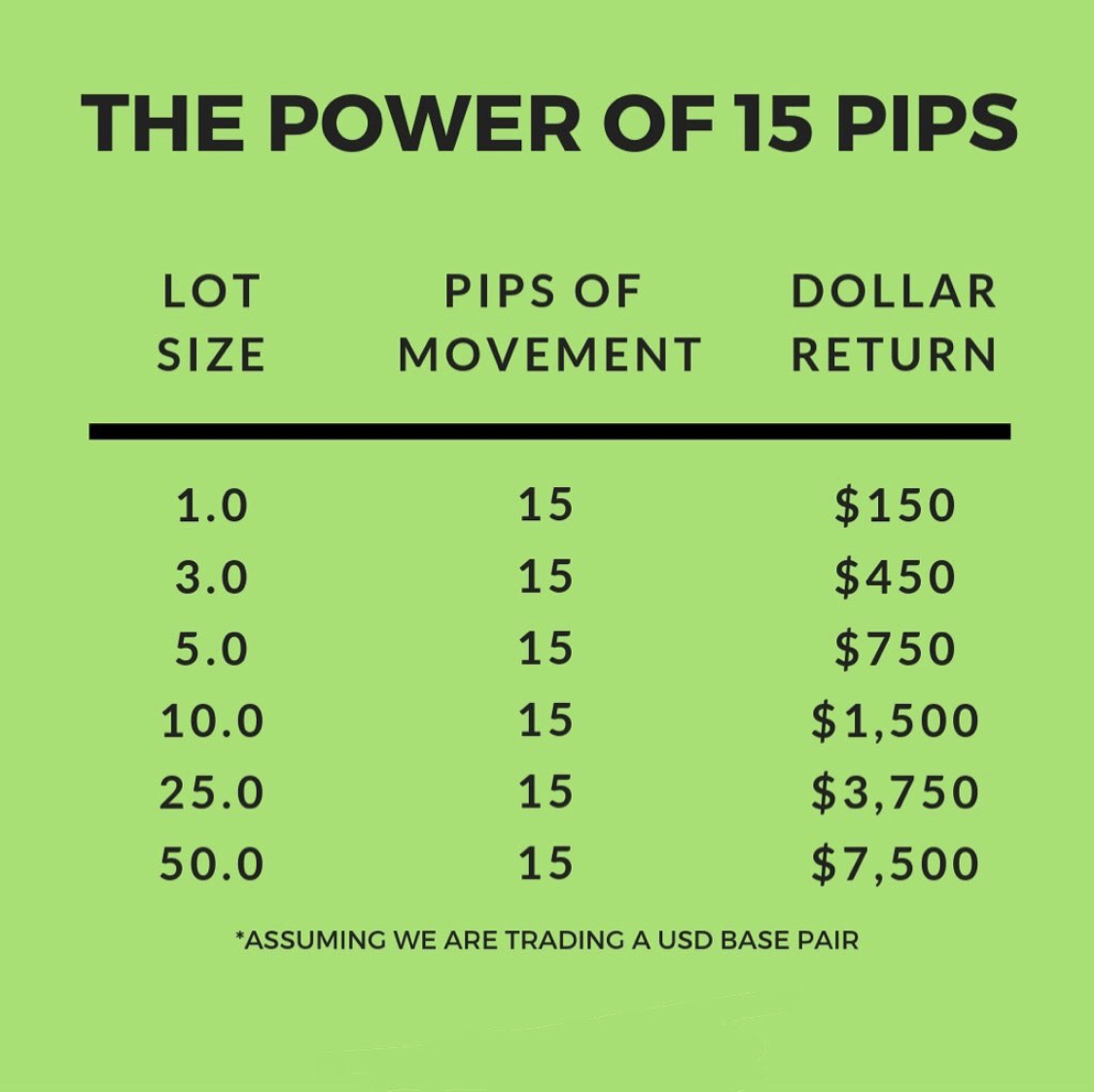Have you ever wondered what lies at the heart of the exciting, yet often perplexing, world of foreign exchange trading? What is the secret ingredient that separates profit from loss, and success from struggle? The answer, my friend, lies within the seemingly innocuous term: **pips**.

Image: www.newtraderu.com
While the word itself might sound like something out of a children’s book, pips, or **points in percentage**, are the fundamental unit of measurement in the forex market. They are the smallest change in the value of a currency pair, and understanding them is crucial for any aspiring trader. This guide will delve into the intricacies of pips, exploring their importance, how they are calculated, and why they hold the key to unlocking your trading potential.
Decoding the Pip: The Building Block of Forex
What Exactly is a Pip?
Let’s break it down: a pip is the smallest possible change in the exchange rate between two currencies. It’s the smallest measurable increment that influences the profit or loss of a trade. Imagine a currency pair like EUR/USD, where 1 euro buys 1.1000 US dollars. A single pip increase would move the rate to 1.1001, meaning that now 1 euro buys 1.1001 US dollars.
Pips in Different Currency Pairs:
The value of a pip can vary depending on the currency pair. Here’s a general rule of thumb:
- Major Currency Pairs (e.g., EUR/USD, GBP/USD): One pip is typically measured in the fourth decimal place.
- Minor Currency Pairs (e.g., USD/CAD, AUD/NZD): Often, one pip is in the third decimal place.
- Exotic Currency Pairs (e.g., USD/TRY, GBP/JPY): Pip values can fluctuate more based on their volatility.

Image: howtotrade.com
Understanding Pip Values:
The value of a pip isn’t a fixed number. It fluctuates based on two primary factors:
- The Quote Currency: The value of a pip is tied to the value of the quote currency in a pair, the currency you are buying. For example, in EUR/USD, the USD is the quote currency.
- The Exchange Rate: As the exchange rate itself changes, the value of a pip changes proportionally.
Calculating Pip and its Real-World Impact:
Understanding Pip Value:
The value of a pip in terms of your trading account’s currency is crucial. Take the EUR/USD example, where the current rate is 1.1000, and let’s say you are trading a standard lot (100,000 units). You buy EUR/USD at a rate of 1.1000. It later rises by 10 pips to 1.1010. Here’s how to calculate the profit:
- Pip Value: 1.1010 (current rate) – 1.1000 (initial rate) = 0.0010.
- Profit in USD: 0.0010 (pip value) x 100,000 (lot size) = $100.
The Concept of Pipette:
Pipettes are sometimes referred to as “fractional pips” and are essential, especially for traders that utilize smaller lot sizes. They are smaller units of measurement that are becoming increasingly common in forex trading. One pipette is essentially one-tenth of a pip.
For instance, if you were looking at a quote like 1.10005, the “5” at the end represents a pipette, a movement of half a pip.
Pips and Trading Strategies:
Micro Lot Trading:
The emergence of micro lot trading, which allows traders to control smaller positions, emphasizes the importance of understanding pipettes. A standard lot is 100,000 units, but a micro lot is only 1,000 units. With a micro lot, a 1-pip movement would only result in a $1 profit or loss. However, a 1 pipette movement, which is 0.1 pip, would result in a $0.10 profit or loss.
Pips and Stop-Loss Orders:
Understanding pips is vital when setting stop-loss orders. Stop-loss orders are designed to limit potential losses by automatically closing a trade when a certain price level is reached. You need to choose a stop-loss level that is significantly far enough away to avoid being triggered by normal market fluctuations.
Determining the appropriate distance for your stop-loss order requires careful consideration of the pip value. A stop-loss order placed too close to the entry point could be triggered by a minor fluctuation, leading to an untimely exit from a potentially profitable trade. On the other hand, a stop-loss set too far away could lead to substantial losses if the market turns against your position.
Pips and the Future of Forex Trading:
Technological Advancements and Pip Values:
The forex market is constantly evolving, and advancements in technology are significantly influencing the way pips are calculated and interpreted. Brokers are offering enhanced trading platforms that allow for more precise order execution and real-time price updates, which can lead to more accurate pip calculations and trading strategies.
The Rise of Scalping:
The increasing use of scalping, a trading strategy that focuses on capturing small price movements, further highlights the significance of pips. Scalpers aim to capitalize on these minute price fluctuations, profiting from even the smallest pip movements. Scalping strategies often involve high-frequency trading and advanced algorithms, highlighting the importance of understanding pip values, trading costs, and real-time market dynamics.
What Are Pips
Conclusion:
Pips are the currency of forex, the building blocks upon which your trading success is constructed. By understanding the intricacies of pips, their value, and how they are calculated, you can gain valuable insights that guide your trading strategy, set appropriate stop-loss levels, and achieve your desired profit potential. So, take the time to fully grasp the power of pips, and unlock the doors to a more informed and successful trading journey!







